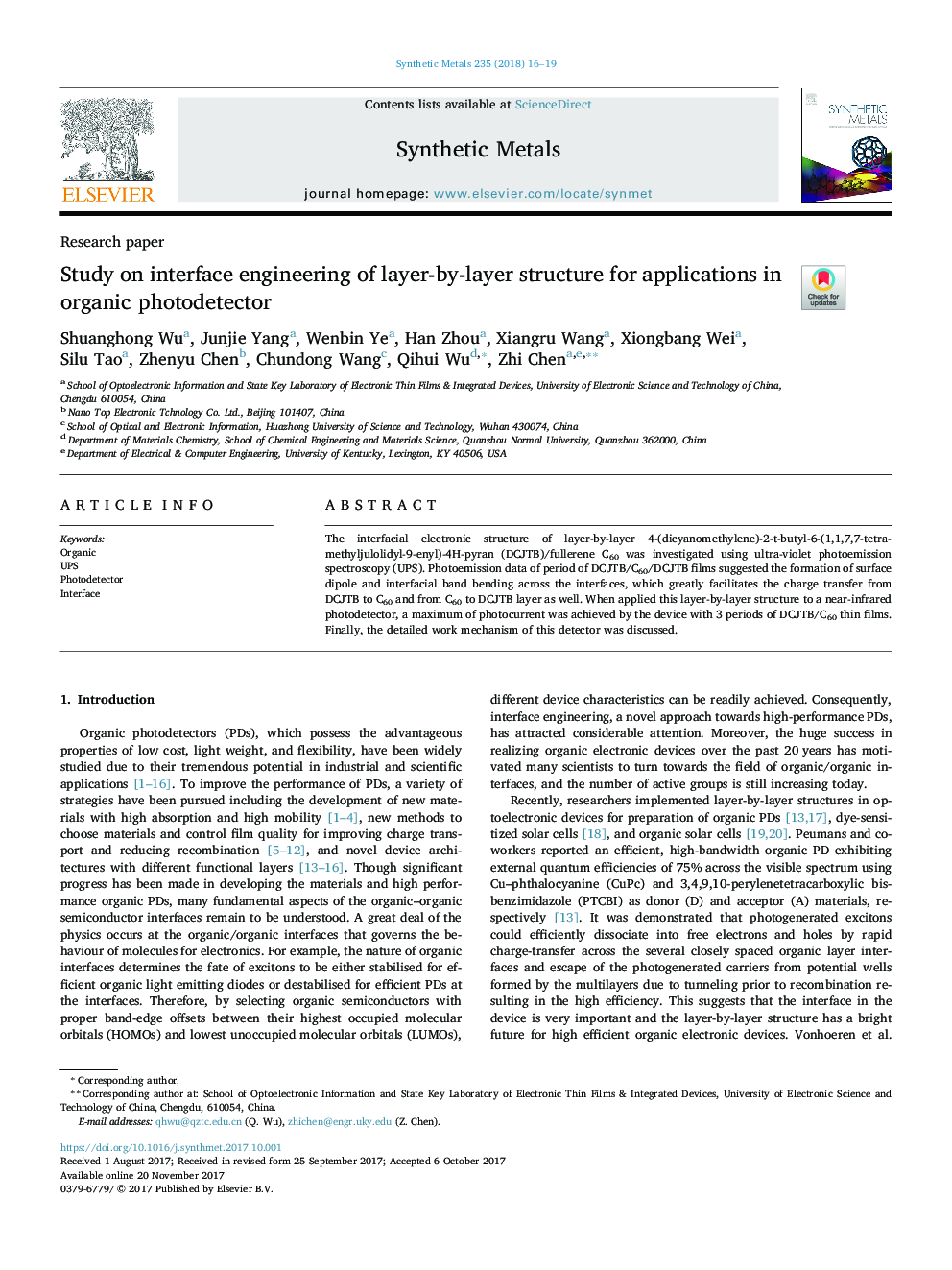| Article ID | Journal | Published Year | Pages | File Type |
|---|---|---|---|---|
| 7873649 | Synthetic Metals | 2018 | 4 Pages |
Abstract
The interfacial electronic structure of layer-by-layer 4-(dicyanomethylene)-2-t-butyl-6-(1,1,7,7-tetramethyljulolidyl-9-enyl)-4H-pyran (DCJTB)/fullerene C60 was investigated using ultra-violet photoemission spectroscopy (UPS). Photoemission data of period of DCJTB/C60/DCJTB films suggested the formation of surface dipole and interfacial band bending across the interfaces, which greatly facilitates the charge transfer from DCJTB to C60 and from C60 to DCJTB layer as well. When applied this layer-by-layer structure to a near-infrared photodetector, a maximum of photocurrent was achieved by the device with 3 periods of DCJTB/C60 thin films. Finally, the detailed work mechanism of this detector was discussed.
Keywords
Related Topics
Physical Sciences and Engineering
Materials Science
Biomaterials
Authors
Shuanghong Wu, Junjie Yang, Wenbin Ye, Han Zhou, Xiangru Wang, Xiongbang Wei, Silu Tao, Zhenyu Chen, Chundong Wang, Qihui Wu, Zhi Chen,
